Though drab grays and browns of winter still cling to the land, shamrock, Kelly, and emerald are the colors everyone thinks of when they think of March. Even where leaf-out is still weeks away, there’s a longing for change in this month that straddles two seasons. This collective anticipation is tinted green. To my eye, though, the tone of these teaser weeks is a bit more vibrant. It’s also tinged with yellow.
Between the weakening cold fronts that periodically crash through as winter reluctantly relaxes its grip, southerly zephyrs tickle dead meadow grass. Those Gulf winds, in concert with a few bluebird days pouring sunlight over the land, urge life out of dormancy. You can feel a promise in the humid air. Its manifestation, for me, materializes in the blobular, chartreuse of algae floating in a stock pond.
My feelings about this harbinger are conflicted, though.
I know those snot-like filaments are the result of way too much cow shit in the pond. March’s inevitable cold rains will carry this phosphorus overdose out of the pond’s spillway, into the creek, and out to the river, compounding (though, infinitesimally by comparison) a poisoning of waters that originated in the nation’s bread basket. What I’ve waited for with the eagerness of a 10-year-old boy waiting on Christmas morning is aiding the slow strangulation of countless waterways including, somewhat ironically, the Gulf of Mexico. Chartreuse is the shade of death in these places. But for a big puddle in the middle of a pasture, it’s the color of life.
There’s a pond just across the barbed wire from my front yard that looks an awful lot like a favorite haunt of my formative years. I’ve been watching it for signs of viridity since mid-February, and it’s finally happening.
More Like This
The pond’s greening coincides with the first anuran love songs, it’s banks and spillway are a soggy stage for buzzing cricket frogs and piping spring peepers. Frog music on a cool, moonlit March evening is a delightful benefit of having a pond nearby, but it’s not tops on my list. The verdant bloom that signals the water’s warming also means that male largemouth bass, bucks, will be scouting the hoof-pocked shallows for nesting sites. Not long after, females will move up, too, preparing to spawn. And those big sows will be hungry. My first hawg bass came to hand from such humble waters exactly four decades ago to this month.
In my Polaroid-filtered memories, I feel the baitcaster’s spool spin barely under the control of my neophyte thumb and the thump of spinner blades transmitted through the graphite rod. I see the water heave like an elemental come to life as an unseen force turns toward the chartreuse spinnerbait. She engulfs it with a jolt of wild electricity, searing me to the bone. Both of us are hooked.
I never knew “chartreuse” was used to describe the color of anything except bass lures until I was nearly 20 years old, so as an homage to that unforgettable March afternoon and my Southern bassin’ roots I tie a few wooly buggers on the tacky side. I even try to figure out a way to put spinners on them, thinking the 9-weight can handle the extra heft, though I’ll have to strip maniacally to keep the blades spinning and the bugger off of the bottom. But then I might as well go back to the Ambassador and Lightnin’ Rod. There’s no need to reinvent the wheel—and poorly at that.
So I just tie them a little bigger than my smallmouth offerings, choosing purple thread as a nod to the “fire tiger” pattern of another favorite bucketmouth bait from what seems a lifetime ago. I have not a doubt that the buggers will catch bass. Chartreuse always catches bass. And the magic of chartreuse aside, pickins are slim in a late-winter stock pond.
With a front moving in after four days of sunshine and mid-60s temperatures, I decide a closer look at the pond’s goings-on is needed, fly rod in hand. Rich smells of manure, mud, and coming rain hang heavy in the air as ankle-deep muck sucks at my rubber boots. The torpedo “V” of a small male bass darts from the cattails. But just a few yards to the left and tight to the bank, heavy swirls undulate the olive waters. She’s there, as she likely has been for nearly a decade and as others of her kind are in small ponds across the rural South every year at just this time.
Two false casts and I’m lined up, dropping the bugger 10 feet beyond her lair. On the first strip the waters agitate. A growing bulge tracks the fly. Suddenly, 40 years evaporates in the soft breeze of a March afternoon.

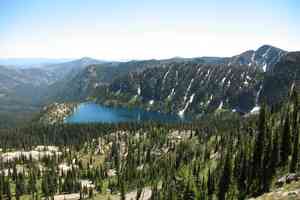
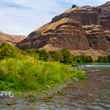

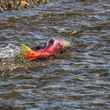
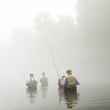
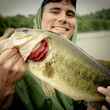

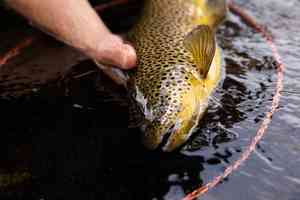

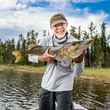
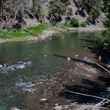



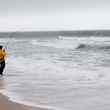

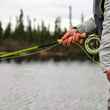



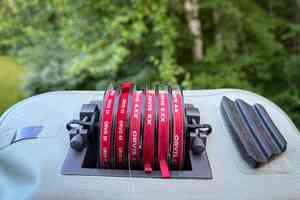
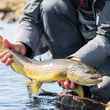
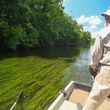
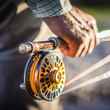

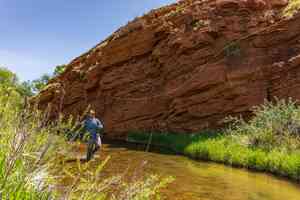


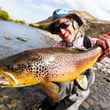
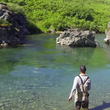
Comments
Mediocre Fly Tyer replied on Permalink
Really enjoyed this article. Whether or not they want to admit it most fly anglers started with a bait caster or spinning rod in their hand. The lingering and fading culture of fly fishing snobbery for whatever reason won’t permit them to admit it. The bright colors of a spinner bait or crazy wobbling action of a balsa square bill is fixating as a kid. And that first catch as you so well described can be life changing.
If I had to choose one style of angling, yes I would pick fly fishing, but since I don’t have to I’ll keep diversifying my rod quiver for whatever the water calls for. Great story. Take it easy.
Pages